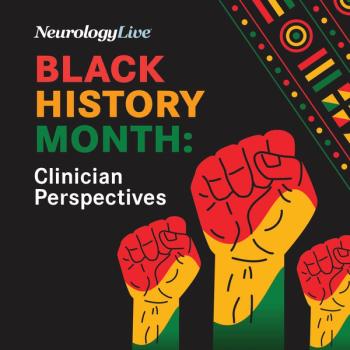
Ataluren Extends Ability to Walk in Patients With Duchenne Muscular Dystrophy
Interim analysis compared ataluren in a real-world setting from the STRIDE registry with a matched cohort; the final data from the STRIDE registry are expected in 2025.
An interim
Those treated with ataluren as part of the STRIDE registry were able to walk independently for an additional 3.5 years compared with a propensity-score matched cohort from the CINRG DNHS. Investigators noted a median age at loss of ambulation was 14.5 years in the STRIDE registry compared to 11 years in CINRG DNHS, respectively (72% relative risk reduction).
"In a real-world setting, children and adolescents treated with ataluren experience a delay in the disease progression, are able to maintain more mobility, and have a higher level of physical autonomy concerning the course of the natural history of the disease. This is not only clinically relevant, but especially important for the quality of life of patients and their families," Andres Nascimento Osorio, MD, pediatric neurologist, Neuromuscular Diseases Unit, SJD Children’s Hospital, in Barcelona, Spain, said in a statement.
Ataluren’s FDA approval process has had a lengthy history. In December 2014, PTC Therapeutics submitted its new drug application (NDA) for ataluren to treat DMD. Less than 2 years later, in February 2016, PTC received a refusal to file letter from the FDA for the investigational treatment, noting an incomplete application. The NDA was then acknowledged by the FDA in May 2017, but received formal dispute resolution request decision from the FDA in February of the following year.2
Strategic Targeting of Registries and International Database of Excellence (STRIDE), is an ongoing, multicenter, observational study that enrolled 213 participants across 53 care centers over a period of 2 years. The study aims to examine the effectiveness of ataluren with SoC versus SoC alone in the Cooperative International Neuromuscular Research Group’s (CINRG) Duchenne Natural History Study (DNHS), as well as identify correlations between ataluren benefit and DMD genotype and phenotype. Enrollment in the STRIDE registry began in March 2015 and included a 5-year follow-up for all patients from the date of their enrollment.3
Investigators noted safety outcomes of ataluren throughout the study. Using the Medical Dictionary for Regulatory Activities, adverse events (AEs) and Treatment-emergent AEs (TEAEs) were coded.
From 2006 to 2016, the CINRG DNHS examined participants between the ages of 2–28 years with a confirmed diagnosis of DMD across 20 centers in 9 countries. Investigators used data from patients receiving SoC as a control to compare against the effects of ataluren plus SoC from those in the STRIDE registry. Originally, the study enrolled 400 patients, but the cohort was narrowed down to 360 after 22 patients were excluded for prior participation in other clinical trials and 18 patients had missing data for age at loss of ambulation and age at first symptoms.
In the STRIDE registry, 213 patients provided consent and did not fail screening. Of those, 181 patients were included in the effectiveness population, leaving 32 excluded for reasons such as frameshift mutations not indicated for ataluren, missing age at first symptoms data and an age at first symptoms that equaled to 0 years.
Compared with natural history cohort, those administered with ataluren sustained a greater ability to complete everyday tasks. Ataluren reported greater effects on patients’ ability to stand up from lying down, in under 5 and 10 seconds, for 3 years longer in boys treated with SoC alone. Additionally, in the STRIDE registry, 32.1% of standard of care patients from the natural history cohort had a forced vital capacity of <50%, compared to only 2.2% of patients receiving ataluren.
There were a reported 117 TEAEs in 43 patients (20.2%). Among them, injury, poisoning and procedural complications were the most common, with patients experiencing fall, femur fracture and humorous facture. None of the TEAE were life-threatening, and most of them were deemed mild or moderate by investigators.
"The data from the STRIDE registry are consistently confirming the benefits seen in Translarna clinical trials and the difference it is making to patients and their families-more years of being independent and physically able without reliance on a wheelchair or ventilator," Claudio Santos, MD, SVP, Global Medical Affairs, PTC Therapeutics, said in a statement.
References:
1. PTC Therapeutics announces first publication of real-world data showing Translarna (ataluren) significantly preserves ability to walk for longer in children with Duchenne muscular dystrophy [press release]. South Plainfield, NJ: PTC Therapeutics. February 3, 2020.
2. Translarna. Drugs.com. drugs.com/history/translarna.html. Accessed: February 4. 2020.
3. Mercuri E, Muntoni F, Osorio AN, et al. Safety and effectiveness of ataluren: comparison of results from the STRIDE registry and CINRG DMD natural history study. J Comp Eff Res. Published online January 30, 2020. doi: 10.2217/cer-2019-0171
Newsletter
Keep your finger on the pulse of neurology—subscribe to NeurologyLive for expert interviews, new data, and breakthrough treatment updates.




























